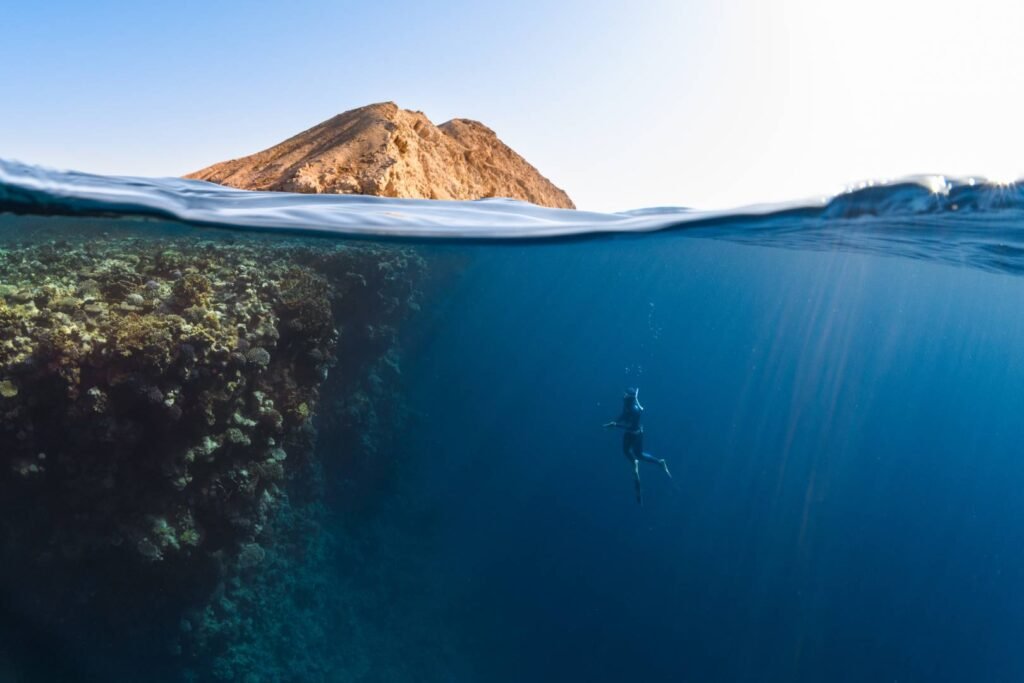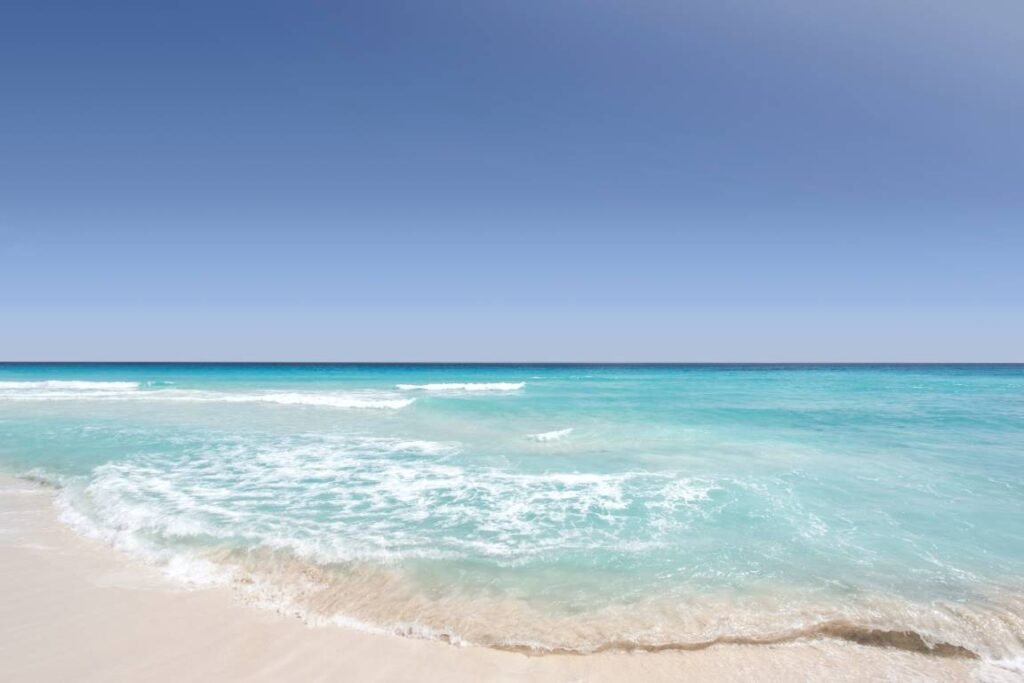“Majestic seas” is a phrase that refers to the vast, powerful, and awe-inspiring bodies of water that cover much of the Earth’s surface. The term “majestic” implies a sense of grandeur and beauty, while “seas” refers to the large expanses of saltwater that make up the oceans, as well as smaller bodies of water like the Mediterranean Sea, Caribbean Sea, and others.
The world’s oceans are home to an incredibly diverse range of marine life, from microscopic plankton to enormous whales, and they play a vital role in regulating the Earth’s climate, as well as supporting human populations through fisheries, transportation, and tourism.
The world’s oceans cover approximately 71% of the Earth’s surface and are home to an estimated 230,000 known species of marine life, with many more likely yet to be discovered. They also play a critical role in regulating the Earth’s climate by absorbing and distributing heat and moisture around the planet.
It is home to millions of species of life, from the smallest plankton to the largest whales. It is also a source of inspiration, wonder and awe for many people who admire its beauty and diversity. Despite their importance, the world’s oceans face numerous threats, including pollution, overfishing, and climate change.
However, human activities have put immense pressure on these majestic seas. Pollution from plastics, chemicals, and other harmful substances has contaminated many marine ecosystems, threatening the health and survival of many species. Overfishing and destructive fishing practices have depleted fish stocks and damaged marine habitats, while climate change has led to rising sea levels, warmer ocean temperatures, and more frequent and severe storms and natural disasters.
Protecting these majestic seas is essential to ensuring a healthy planet for future generations.
To address these challenges, many countries and organizations have implemented conservation measures, such as establishing marine protected areas, promoting sustainable fishing practices, and reducing plastic waste. However, much more needs to be done to protect these majestic seas and ensure their health and resilience for future generations.
More about Majestic Seas

In this blog post, I will share with you some of the most amazing and fascinating aspects of the ocean, and why it is important to protect and conserve this precious resource.
I will also give you some tips on how to enjoy the ocean responsibly and safely, whether you are a diver, a surfer, a sailor or a beach lover.
The ocean is divided into five major regions: the Pacific, the Atlantic, the Indian, the Arctic and the Southern. Each region has its own characteristics and features, such as climate, currents, salinity, depth and biodiversity. The ocean is also divided into different zones based on how much sunlight reaches them: the epipelagic zone (0-200 meters), the mesopelagic zone (200-1000 meters), the bathypelagic zone (1000-4000 meters), the abyssopelagic zone (4000-6000 meters) and the hadalpelagic zone (6000-11000 meters).
The deeper you go into the ocean, the darker, colder and more pressurized it becomes. The deepest point in the ocean is called the Challenger Deep, which is located in the Mariana Trench in the Pacific Ocean. It is about 11 kilometers deep, which is equivalent to stacking 36 Eiffel Towers on top of each other. Only a few humans have ever reached this depth, using special submarines or submersibles.
The ocean is not only deep, but also wide. The longest mountain range in the world is actually underwater: it is called the Mid-Ocean Ridge, and it stretches for more than 65000 kilometers across the ocean floor. It is formed by volcanic activity that creates new crust as tectonic plates move apart. Along this ridge, there are hydrothermal vents that spew out hot water and minerals that support unique ecosystems of bacteria, worms, crabs and other organisms.
The Majestic Seas – Ocean is also full of life.
Scientists estimate that there are more than one million species of marine organisms, but only about 10% of them have been identified and described. Some of the most well-known and charismatic animals in the ocean are mammals, such as dolphins, whales, seals and sea otters. They are warm-blooded, have hair or fur, breathe air and nurse their young with milk.
Other common animals in the ocean are fish, which are cold-blooded, have scales or skin, breathe water through gills and lay eggs or give birth to live young. There are more than 30000 species of fish in the world, ranging from tiny seahorses to giant sharks. Some fish have special adaptations to survive in different environments, such as bioluminescence (the ability to produce light), camouflage (the ability to blend in with their surroundings) or electric organs (the ability to generate electricity).
Besides mammals and fish, there are many other types of animals in the ocean, such as reptiles (turtles, crocodiles and sea snakes), birds (penguins, albatrosses and gulls), invertebrates (corals, jellyfish and octopuses) and plants (seaweed, seagrass and algae). They all play important roles in maintaining the balance and health of the ocean ecosystem.
These Seas are beneficial for Humans too

The ocean is not only a home for life, but also a provider of many benefits for humans. The ocean produces more than half of the oxygen we breathe, regulates the climate by absorbing heat and carbon dioxide from the atmosphere, provides food and medicine for millions of people around the world and offers opportunities for recreation, tourism and education.
However, the ocean is also facing many threats from human activities. Some of these threats include overfishing (catching more fish than can be replenished), pollution (dumping waste or chemicals into the water), habitat destruction (damaging or removing coral reefs or mangroves), invasive species (introducing foreign organisms that disrupt native ones), climate change (increasing temperature and acidity levels) and noise (disturbing marine animals with loud sounds).
Threats to these ‘Majestic Seas’
These threats have serious consequences for both marine life and human well-being. For example, overfishing can lead to reduced biodiversity and food security; pollution can cause diseases and poisoning; habitat destruction can reduce nursery grounds and coastal protection; invasive species can compete with or prey on native ones; climate change can alter migration patterns and reproductive cycles; noise can interfere with communication and navigation.
10 facts about Majestic Seas
Here are ten facts about majestic seas:
- The world’s oceans cover approximately 71% of the Earth’s surface and contain 97% of the Earth’s water.
- The deepest point in the ocean is the Challenger Deep in the Mariana Trench, which reaches a depth of over 36,000 feet (10,972 meters).
- The largest ocean on Earth is the Pacific Ocean, which covers an area of approximately 63.8 million square miles (165.25 million square kilometers).
- The Atlantic Ocean is home to the Sargasso Sea, a unique area of the ocean where a species of seaweed known as Sargassum forms large mats on the surface.
- The Indian Ocean is the warmest ocean on Earth, with an average temperature of 77°F (25°C).
- The Southern Ocean, also known as the Antarctic Ocean, surrounds the continent of Antarctica and is home to large populations of whales, seals, and penguins.
- The Mediterranean Sea, located between Europe and Africa, is the largest enclosed sea in the world.
- The Caribbean Sea, located between North and South America, is home to some of the world’s most beautiful coral reefs and beaches.
- The Great Barrier Reef, located off the coast of Australia, is the world’s largest coral reef system and is home to thousands of species of marine life.
- The Gulf of Mexico is the ninth largest body of water in the world and is known for its rich oil reserves, as well as its diverse marine life, including sea turtles, dolphins, and whales.
You may also like,
- 10+ Meaningful Ocean Quotes for Sea lovers
- Knock Nevis – Everything about the Largest Ship Ever Made
- How big is the Atlantic Ocean?

